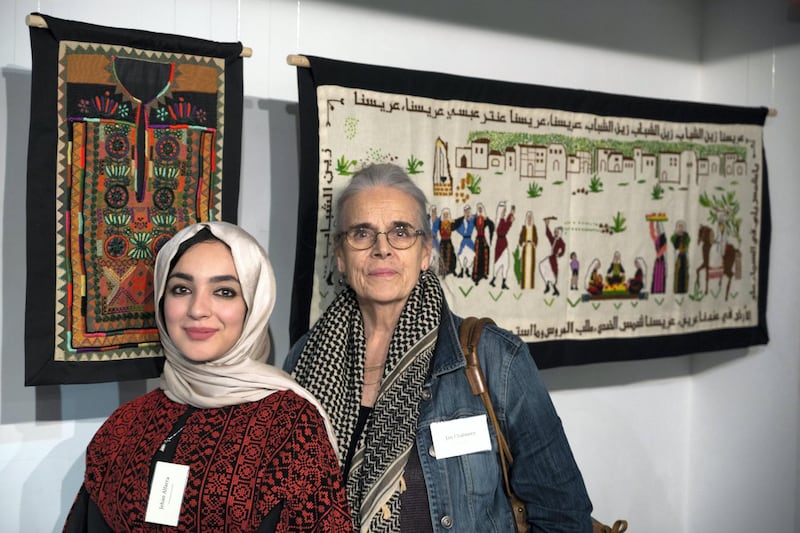There are many things that the Israelis have appropriated from the Palestinians and claimed as their own, among them land, natural resources, victimhood – and even hummus. But so far, Palestinian embroidery has remained firmly and affirmatively a central and unifying part of Palestinian culture.
It is therefore fitting that a new project documenting and celebrating more than 10,000 years of the history of Palestine and its people comprises dozens of embroidered images that together form the Palestinian History Tapestry.
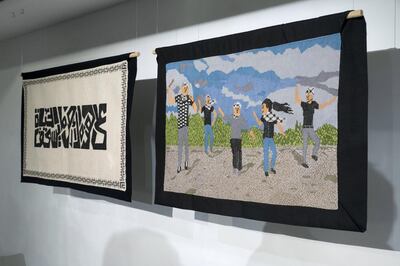
And it was particularly fitting that the project’s official opening at the P21 Gallery in central London last week (in December 2018) coincided with the 70th anniversary of UN Resolution 194, affirming Palestinian refugees’ ‘right of return’ to their homes in what is today Israel – a right that Israel continues to defy.
Jehan Alfarra, a journalist from Gaza living in London, has been involved with the Palestinian History Tapestry as part of its panel selection committee. She says the tapestry has “been a way for all of us Palestinians, wherever we are, to document and contribute to one project that talks about our perspectives and our experiences as Palestinians”.
“Palestinians, wherever they are, will relate to embroidery – it’s central to our culture and is one thing that unites us.”
While there are symbols that one would expect in such a project – keys representing the Naqba and a longing to return home, the olive harvest, Jaffa oranges and words from the poetry of Mahmoud Darwish, for instance – the scope of the dozens of beautiful and often compelling images that make up the tapestry is far broader and richer as a result.
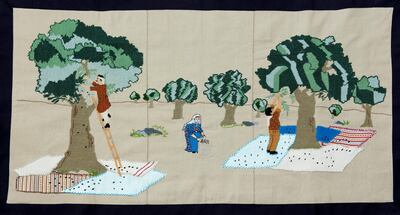
Its organisers recruited Mahmoud Hawari, director of the Palestinian Museum in Birzeit, and Ghada Karmi, research fellow at the Institute of Arab and Islamic Studies, Exeter University, to create a historical timeline of Palestine for the tapestry. Its images start with the Stone Age, including the ancient walled city of Jericho (8000 BC), and continue right up to the present day, with the Great March of Return represented.
Palestine’s current history dominates, as it should, reflecting a century of colonisation, beset with hardship. Several works creatively “reframe” historical documents and personalities, including the Balfour Declaration and General Allenby’s capture of Jerusalem, which have contributed to Palestine’s troubles.
The treatment of these, and the subjects of many other panels, are testaments of “sumud” (steadfastness) – a thread that literally connects the works with a collective sense of purpose.
“We constantly have people trying to deny our existence when it should be the other way round,” says Alfarra. “This tapestry shows that we’re here, telling the world our story.”
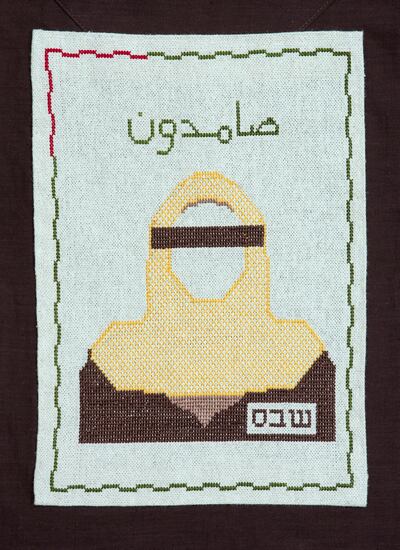
Jan Chalmers is the founder and co-ordinator of the Palestinian History Tapestry Project, which she initiated in 2012. She worked in Gaza's Jabalia refugee camp as a young nurse with the UN nearly five decades ago, which is where her strong connection to Palestine first took root after witnessing the injustices suffered by the people there. Chalmers had taught embroidery to South African village women between 2000 and 2012, and supported them in creating a beautiful tapestry representing 300 years of history – the Keiskamma History Tapestry – all 122 metres of which now hang in the South African Parliament House in Cape Town.
Given the strong culture of embroidery among Palestinian women, replicating the purpose and ethos of a similar tapestry to a Palestinian context – one which celebrated the Palestinian women’s skills, provided them with some income, united them despite their geographical separation, and enabled them to document their narrative – seemed obvious to Chalmers and the friends she brought on board to make it a reality. “The images for the panels are chosen by Palestinians, drawn by Palestinians, and stitched by Palestinians,” says Chalmers. “The Palestinian panel creators are the only ones who are paid for what they do.”
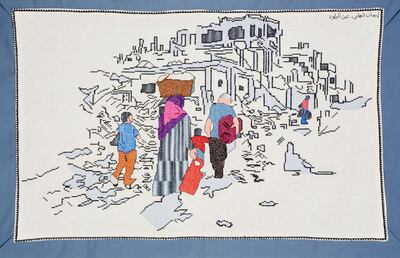
The current collection – it continues to grow and evolve – includes embroidered panels by women in Gaza, the West Bank, Galilee and Al Naqab inside Israel, and refugee camps in Lebanon and Jordan. “It has a way of bringing the women together. One of the panels was designed by a woman in Gaza and stitched by a woman in Lebanon,” Chalmers told the audience at the opening.
Co-ordinating such a project with groups of women scattered across the Middle East, particularly with travel restrictions imposed by Israel, Egypt and Lebanon, is a challenge, but communicating with co-ordinators has been simplified by email, Skype and telephone. Fundraising is a perennial problem. “We are, at the moment, a low-budget enterprise, and we have managed to pay the embroiderers what they have asked, but we have no cash to spare,” Chalmers says.
One of the most difficult challenges for the project has been the deadly violence affecting many of the communities in recent years. “This has really been a labour of love for the women involved,” Chalmers told visitors, “particularly for the women in Gaza and the Ain Al Hilweh camp [in Lebanon].” She paid tribute to Samar Alhallaq, a project co-ordinator in Gaza who was killed along with her two young sons and unborn child during Israel’s assault on the enclave in 2014. The launch was a standing-room only event, attended by about 120 people, mainly Palestine supporters. Alfarra says that the project is a beautiful and inspiring example of “the work of solidarity campaigners working with Palestinians.”
________________
Read more:
The Arab film industry needs more support, says Annemarie Jacir
Laila Al-Atrash: 'Writers are very poor in the Arab world because nobody gives you anything'
Palestinian director Muayad Alayan on beating all the odds to make films in Palestine
Portrait of a Nation: Dubai resident helps refugees stitch their lives back together
________________
Private art dealer Zayna Al-Saleh was very impressed by both the collection of panels and the project. “The exhibition guides you through a lineage of pillaging and resistance, the context of the holy and nostalgic prototypes, in a medium that has come to define Palestinian identity. But as a Palestinian myself, it was the common thread that resonated; the pulse of enthusiasm for a shared discourse articulated by the extent of national and international efforts of the Palestinian History Tapestry.”
This exhibition marks Phase One of an organic, evolving project. When asked what’s next, Alfarra says that no set plans are in place; she agreed, however, that an internationally touring exhibition to educate audiences about the Palestinian narrative, along with marketing images from the tapestry through souvenirs and replicas to raise funds for further growth, would be an ideal next step.
And perhaps we’ll see it in the UAE next? Maliha Tabari, managing director of Tabari Artspace in Dubai, has focused on Palestinian artists and heritage this year at her gallery, and she certainly hopes so.
“The Palestine History Tapestry is an important project because it not only celebrates the country’s rich visual history, but also brings women’s talents to the forefront. I think the community in Dubai would especially benefit from and appreciate such a celebration of Middle Eastern heritage, so I hope the exhibition reaches the UAE.”
